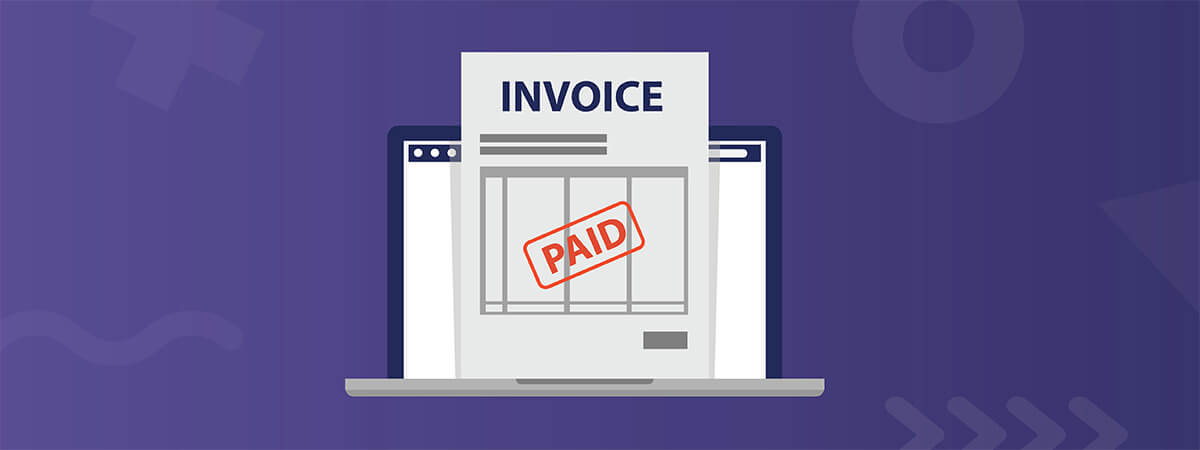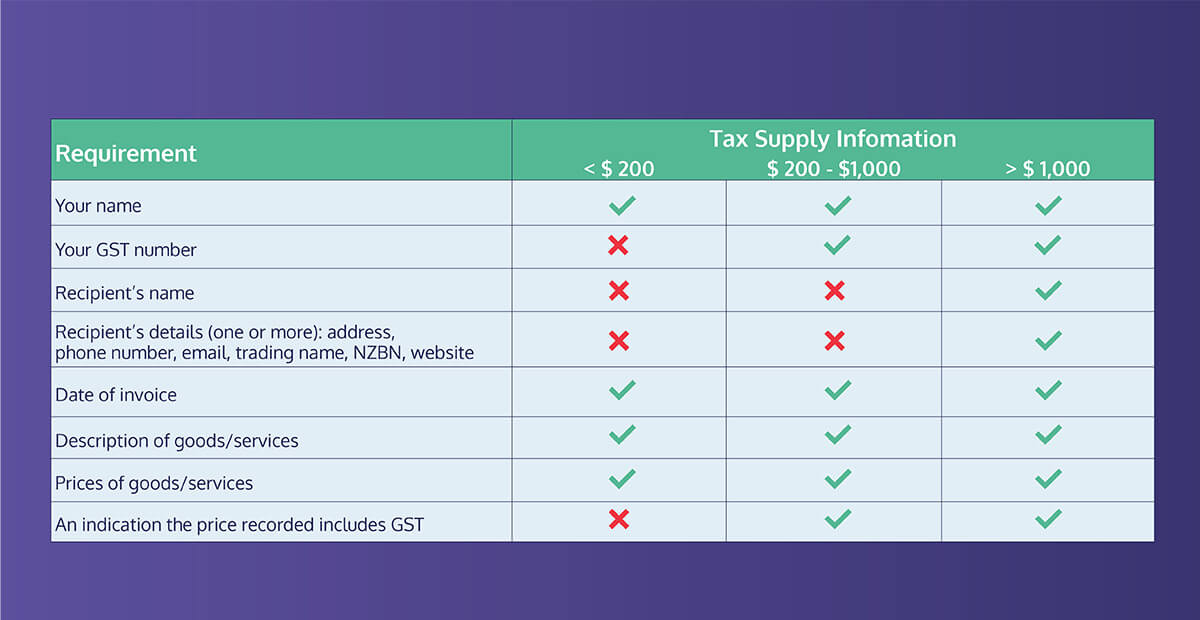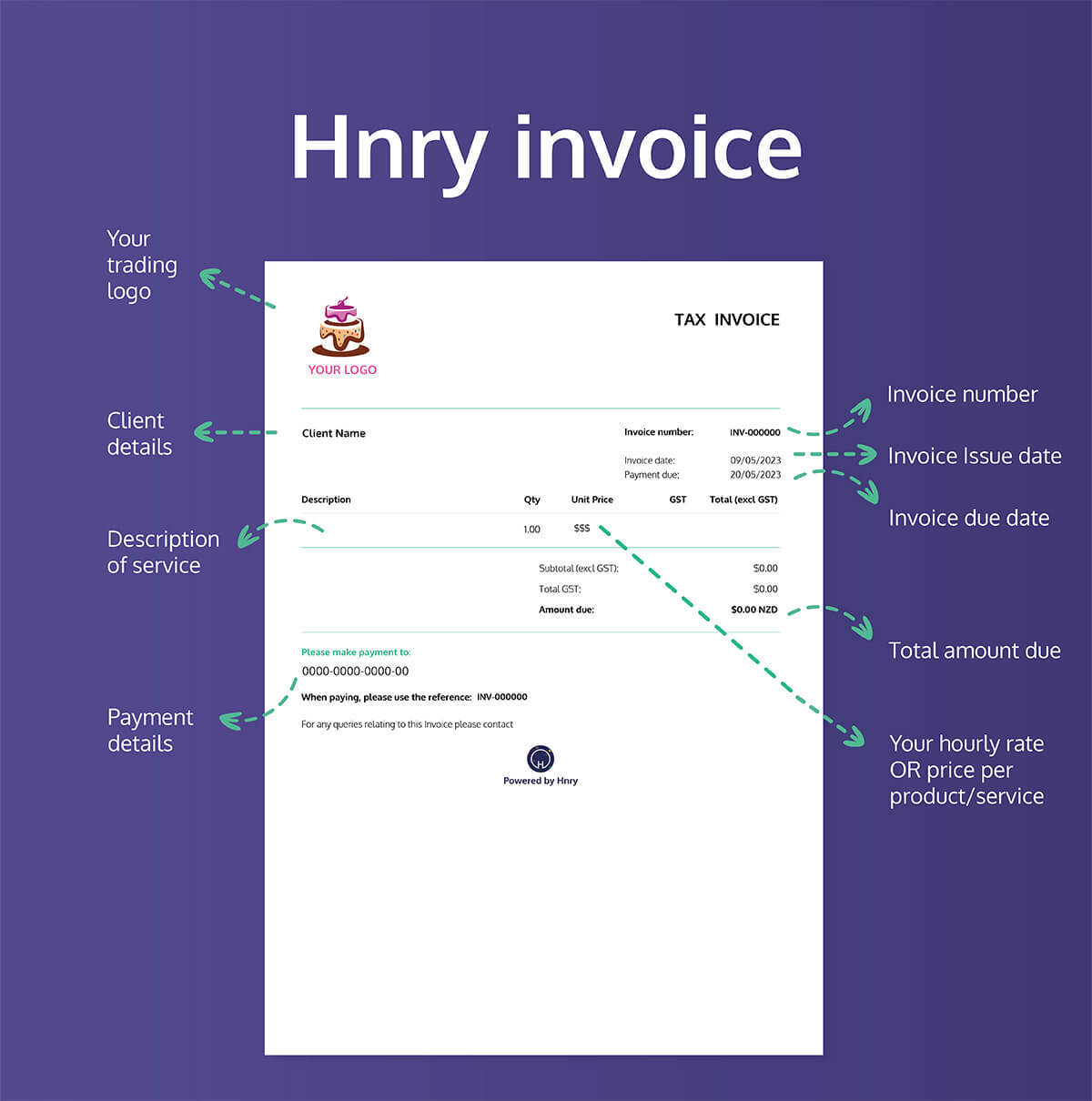If you’re a sole trader who invoices their client, you (hopefully) know that invoices are more than a few scribbled details on a scrap piece of paper. There’s a real art to invoicing, and mastering it will help your brand, your business, and your bank account.
For starters, an invoice isn’t just an invoice; it’s an extension of the relationship you’ve been building with your client. You want to extend the good impression created by your high-quality goods/services, not let yourself down with a shoddy, unprofessional followup.
As well as looking good, your invoice should be a summary of the agreed terms of your service, with no surprises or hidden fees – you and your client need to be on the same page (literally).
And if you and your client are GST registered, you’ll also need to make sure your invoices are compliant with the IRD’s taxable supply information rules. If you don’t, your clients may struggle to claim back GST on your goods and services.
So with all this in mind, how do you create clear, professional, compliant invoices that get you paid? Don’t worry – here’s everything you need to know in order to create, send, and follow up on the perfect invoice.
- What is an invoice?
- Why send an invoice?
- Before you send an invoice
- How to create an invoice
- Invoice template
- Chasing overdue invoices
- Invoicing with Hnry

What is an invoice?
Very simply, an invoice is a bill sent to a customer upon the purchase of goods or services.
It’s only used in cases where payment isn’t immediate – for example, you wouldn’t expect an invoice every time you buy a McSpicy. In that instant, the transaction of goods for payment is immediate, no invoice needed (although you might opt for a receipt).
Instead, invoices are usually sent when the payment for goods/services isn’t immediate. It’s a “paper” record of what was purchased, how much of it, how much it cost, whether or not GST was charged, and when the client is due to pay.
(Nowadays, all the cool kids are sending invoices virtually – no paper required. Some of them even use Hnry to do it. See how it works.)
Why send an invoice?
Invoices serve a few important functions.
Firstly, they help businesses track sales and payments. By retaining a copy of every invoice you send, you can keep on top of who’s paid you, and who still owes you money. From there, you can chase up late payers, and make sure every invoice is fulfilled in a *relatively* timely fashion.
Secondly, depending on the details included, invoices can be a legal record of the agreement between you and your client. It’s that much harder to argue terms and conditions down the line when both parties have a record of what’s due.
Finally, if your business doesn’t involve instant transactions, invoices can help you get paid faster. They usually contain a clear due date for payment, and are easier to remember and chase up than, say, a handshake.
Before you send an invoice
Hold your horses! Before you start working for a client, there are a few things you should have straight.
1. Set clear expectations
Before you start doing any work for a client, make sure they are aware of your rates (hourly/daily) and any additional fees you might charge (eg, ‘extra editing time’ or ‘call-out fees’).
If you’re a sole trader dealing in services rather than products, a good way to keep things clear is to provide a quote – specifically, a written one. Include all the services you’ll be providing, including the price, and only start the job if the client agrees.
This way, there’s less space for surprises for either of you down the line!
2. Be transparent
If you require a deposit, or partial payment upfront, now’s the time to say so.
Say you need 50% of the invoice paid ahead of time in order to pay models for a photo shoot for a client. Letting the client know ahead of time (while justifying the need for upfront payment) is crucial for maintaining a transparent relationship.
3. Who you work for, and who you invoice
If you’re working for a big company, there may be a few different points of contact to keep track of.
Your direct contact may prefer you send your invoice directly to their finance team. If so, make sure you have the right details ahead of time. You don’t want to chase up an invoice, only to discover that it never reached the right person.
4. The right due date for payment
If you set an unreasonable due date, chances are your client will be less than impressed.
You’ll want to pick a date that’s far enough in the future that your client has flexibility in paying you, but close enough that they won’t forget to pay at all. A good rule of thumb is to set the due date at 21 days after the invoice was first issued. This gives your clients three weeks to pay you, which should be plenty of time.
Of course, this all depends on your clients and your industry. Some companies only settle their accounts once a month – finding this out beforehand could help you manage your payment timeframes (and cash flow).
Basically, don’t be afraid to experiment if 21 days doesn’t feel quite right for you, your client, or your business.

How to create an invoice
Now we’re on to the fun stuff!
Once your work has been completed/your supplies have been received, it’s time to create and send that all-important invoice.
There are a few things you need to include in your invoice, as a professional. While a hastily scribbled note with the right information technically does count as an invoice, it doesn’t exactly leave the best impression. Especially if it’s off the top of your head and you accidentally forget a few details.
But, your invoices also don’t need to be fancy. Jan from the Finance team doesn’t care about your font/emojis/clip art – she just wants the information she needs to pay you. Simple, professional invoices get the job done.
And if you’re GST registered, your invoices are required to contain certain information in order for your clients to be able to claim back the GST in their own returns.
All in all, it’s a good idea to craft your invoices ahead of time as an extension of your work and brand.
Things to include in an invoice
Unless you’re GST registered, there aren’t strict requirements for what your invoice should be like. But, if it’s your goal to craft a professional-looking document, there are a few things you should consider including. Let’s start at the top (literally):
- Business logo
- If your business has a logo, having it on your invoices is pretty flash. The top left-hand corner is a good place for this.
- Remember, you don’t actually have to be a registered company to have a business name and logo. For more information, check out our article on whether you should register your own company.
- Your details
- This could be as simple as your or your business’ name and address. What you feel comfortable with is up to you.
- An invoice number
- Useful for keeping track of various invoices.
- 🧮 Hnry keeps track of invoices for you – including when they’re seen, and when they’re paid – learn more.
- The client’s details
- All you really need is their name, but you can add other details like their address and phone number if you want to.
- If they’ve requested that you use a purchase order number, here’s where you include it.
- A description of your goods/services
- Both you and your client should know exactly what you’ve provided.
- The quantity of your goods/services
- If you’re being paid on an hourly basis, the quantity here is the number of hours you worked.
- Your client may request, or you may want to include, a timesheet. You can attach this to your invoice, or provide a link in the invoice itself (if it’s digital. Links don’t work so well in hardcopy)
- The unit price of your goods/services
- How much does an hour of your time cost? Or how much does it cost to unblock a single toilet?
- 📖 Not sure if it’s better to charge by hour or by service? Check out our guide to pricing your work.
- The total cost of your goods/services
- This is the quantity x unit price. If you unblocked 10 toilets, say, that’s the price of unblocking a toilet x10.
- Expenses
- If your client agreed to reimburse you for costs incurred as part of your work, you can include these in your invoice.
- Depending on your work/client, you may need to provide proof of purchase.
- Reimbursed expenses aren’t taxed, so you can exclude them from your taxable income. You also can’t claim them yourself as expenses.
- The final total
- All the prices listed for individual goods/services added together.
- Whether or not GST is included in your prices
- This is more relevant if you’re registered for GST, but a good thing to include for the sake of clarity.
- Payment methods and information
- It’s useful to have several ways a client can pay you. You can use services like Stripe or Paypal to enable credit card payments (or Hnry, which includes a credit card payment option at no extra cost to you). Otherwise, you’ll need to include a bank account number.
- You could also request that they include the invoice number as a reference.
- 💡It’s a good idea to avoid cash payments. These are hard to track and aren’t generally IRD friendly.
- Any other comments
- Include anything else that’s relevant for your client in a few notes.

If you’re GST registered
If you’re GST registered, the IRD requires you to include certain information on your invoices, in order for your clients to be able to claim GST back on their purchase.
The good news is that as of the 1st of April 2023, these rules have been simplified. You don’t need to create “tax invoices” anymore like you used to – instead, you’re putting together “taxable supply information”.
What you need to include in your invoice in order to be compliant will depend on how much you’re invoicing for.
If your invoice is for less than $200, it must include:
- Your name
- The date of the invoice
- A description of your goods/services
- The price of your goods/services
If your invoice is between $200 and $1,000, it must include:
- Everything mentioned above, as well as
- Your GST number
- An indication the price recorded includes GST
If your invoice is for more than $1,000, it must include:
- Everything mentioned above, as well as
- The recipient’s name
- The recipient’s address, phone number, email, trading name, NZBN, OR website
💡 For regular customers, you could provide the non-variable information like your name, contact details, and GST number in a separate document for them to refer to. That way, all you need to include in an invoice is the stuff that’s directly related to the transaction – eg. goods/services, prices, totals.

📖 For more information about GST and invoicing, check out our mammoth article on GST.
Invoicing Template

Chasing overdue invoices
Just like that, the fun is over. Sigh.
Unfortunately, late paying clients are very much a thing (the average invoice is paid 10 days after the due date). And it’s a bad thing – for you, and your cash flow.
If things are going well, you may be able to afford to ignore a late payment for a while. But sooner or later, you really do need to be paid. But you don’t want to nag and risk damaging a good relationship. So, what do you do?
Well, there are a few things that might help here.
- Flexible payment options
- The more payment options you have, the fewer excuses your client has for not paying you!
- Send a chase up email
- Be cordial, but firm. After all, they’re in the wrong here.
- Sample chase-up email copy: Hi [Client’s name], I haven’t yet received payment for invoice [number], sent on [date]. Please let me know when you expect to make payment. Thanks in advance, [Your name]
- Use Hnry
- No, seriously. Hnry automatically sends a (polite) email to chase up late-paying clients – you don’t have to lift a finger.
- More importantly, our research shows that sole traders who use our Invoicing feature get paid two days after the due date. WAY better than 10!
Invoicing with Hnry
Hnry makes invoicing really, really simple for sole traders.
For starters, you don’t have to create your own template – we do it all for you. From adding your logo, to figuring out the final total, you can create a professional, compliant invoice in a matter of minutes.
Better yet, you can do it on the go using our mobile app. It’s even easier if you’ve already saved your clients’ details.
You can also:
- Schedule invoices ahead of time
- Add notes, comments, and other details
- Preload services and prices
- See when clients have received, seen, and paid your invoices
- AND we send a professional, polite chase up email automatically, so you don’t have to think about late payers again.
Not to mention, we calculate and pay your taxes every time you get paid, and file your tax return with the IRD every financial year. Basically, we are your accountant. All for 1% of your self-employed income, capped at $1,500 annually.
Join Hnry today!
Share on:


